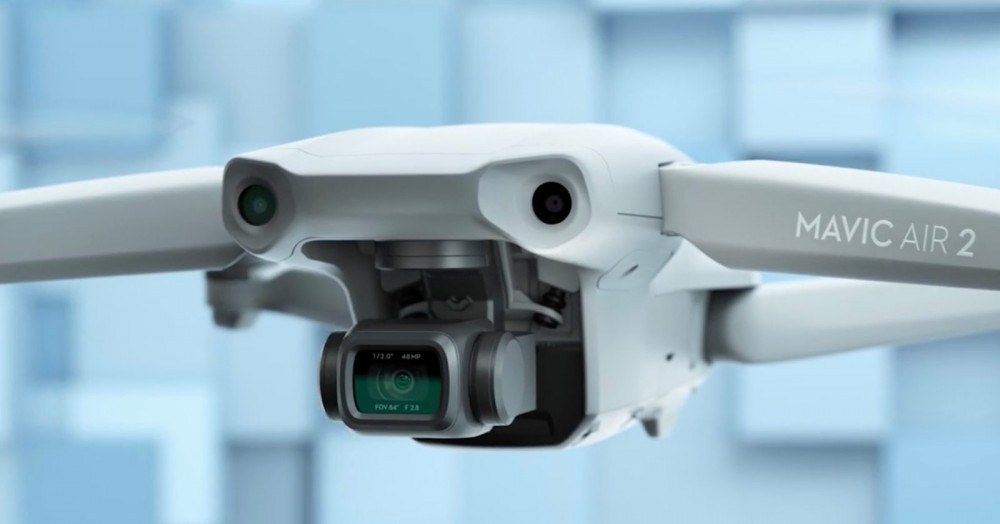
The DJI Mavic Air 2 – The Perfect In-Between Drone for 2020!
April 29, 2020Not to be one-upped by its competitors (Hello, Autel), DJI has released a new drone, The DJI Mavic Air 2. As soon as I heard of the official release, I had to check it out and see what it has to offer.
I must admit, I’m impressed by what DJI has packed into this tiny package. It’s a cross between my original Mavic Pro, the Mavic 2 Pro, and the Phantom 4 Pro 2.0, beating them on some aspects and falling just short on others. Still, it’s an engineering feat.
I’d like to take the time to share The DJI Mavic Air 2 with you. We’ll cover its features and specs, where it fits in with the Mavic (and Phantom) family, and end with my personal opinion.
Table of Contents
I suppose this is as good a place as any to begin…
THIS POST MAY CONTAIN AFFILIATE LINKS. PLEASE SEE MY AFFILIATE DISCLOSURE FOR MORE INFORMATION.
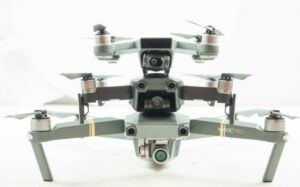 The DJI Mavic Air 2 – Does DJI Really Need Another Drone In The Mavic Series?
The DJI Mavic Air 2 – Does DJI Really Need Another Drone In The Mavic Series?
That’s a great question!
I’m sure many of you are a lot like me, thinking, “Come on! Where’s the Phantom 5 already?”. Frankly, that’s a fair question and one I hope to have answered soon but expect to be next year’s offering with bells and whistles to meet the proposed FAA guidelines that are still being reviewed.
Before I get off on a tangent we’re not prepared to get into; I’ll circle back to the question at hand…
In short, Yes, there’s plenty of room for another Mavic drone. The real question is, Is the Mavic Air 2 the right drone to add to the Mavic series.
Now, to answer that question, we’ll need to go through its features, specs, and so on to see if it does have a place in the family. What I can say, based on a quick glance, is that The DJI Mavic Air 2 seems to take the best of its predecessors, toss in some enhancements and a little upgrade love, and package them up in one fantastic package.
Hell, even one of their slogans is “Up Your Game!” Check out these DJI promo videos:
All of that should be enough to lure you in for a closer look, so let’s start with some key features…
 What Are The Key Features?
What Are The Key Features?
OK, so we have a new bird. What’s it got stashed under its wings?
A Larger/Smaller Sensor
What? Well, the sensor is either larger or smaller, depending on which other models you compare the new DJI Mavic Air 2 to… If it’s the Phantom 4 Pro V2.0 or the Mavic 2 Pro, then it’s smaller. If it’s any of the other Mavic models, it’s bigger. Still, that’s the physical size of the sensor and doesn’t convey what it’s capable of.
For example: Even though the sensor is smaller than the Phantom 4 Pro V2.0 or Mavic 2 Pro, it boasts an impressive 48-megapixel photo capability as well as the ability to record 4K video at 60 frames-per-second using the H.265 codec! The photo resolution alone blows the Phantom 4 Pro V2.0 and Mavic 2 Pro out of the water!
Enhanced HDR
Who doesn’t love a high dynamic range? It offers the best details in the shadows and highlights. Now, you can get HDR in all modes (photo, pano, and video)!
Cinematic Content
8K Hyperlapse
It may be a 4K video camera but, you can actually create 8K Hyperlapse videos. Not only that, but you also get to select from the following flight modes:
- Free
- Circle
- Course Lock
- Waypoint
QuickShots
This is just a fancy intelligent flight mode that will plan and execute complicated aerial routes to achieve professional-quality shots. This mode includes the following route options:
- Dronie
- Circle
- Helix
- Rocket
- Boomerang
- Asteroid
Enhanced Intelligent Flight Modes, referred to as FocusTrack.
This package includes Active Track 3.0, Spotlight 2.0, and Point of Interest 3.0.
Longer Flight Times
Now, this is pretty cool. DJI has bested all the other drones I’ve listed above by giving this beast a max flight time of 34 minutes.
Remote Controller Design
The remote control boasts an impressive 240 minutes per charge and has a newly designed clip for mobile devices.
Upgraded Obstacle Avoidance
This is another one that’s kind of in the middle as far as how it compares to the other offerings. First off, it’s an upgraded APAS 3.0 obstacle avoidance package but only offers forward, backward, and downward protection. It’s a trade-off. I’d call this one a multi-directional obstacle avoidance solution but still like the idea of the omnidirectional full-protection suite better.
OccuSync 2.0
So, instead of the middle of the pack, this one at least meets the others at the top. OccuSync 2.0 is the latest and greatest currently available, offering 1080P connectivity up to 10km, but it not unique to The DJI Mavic Air 2.
Speed
Now, here’s a great feature. Up to 68 kph in Sport Mode! That’s pretty damn fast.
That should cover most of the details. Now let’s look at the actual specs…
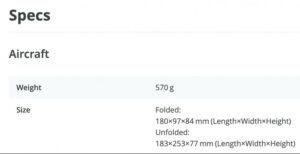 Let’s See The Specs!
Let’s See The Specs!
The following specs come directly from DJI’s website:
Aircraft
- Weight: 570 g
- Size: Folded:180×97×84 mm (Length×Width×Height), Unfolded: 183×253×77 mm (Length×Width×Height)
- Diagonal Distance: 302 mm
- Max Ascent Speed: 4 m/s (S Mode), 4 m/s (N Mode)
- Max Descent Speed: 3 m/s (S Mode), 3 m/s (N Mode), 5 m/s (S Mode during a sharp descent), 3 m/s (all modes at elevations over 4500 m)
- Max Service Ceiling Above Sea Level: 5000 m
- Max Flight Time (without wind): 34 minutes
- Max Hover Time (without wind): 33 minutes
- Max Flight Distance: 18.5 km
- Max Horizontal Flight Speed: 19 m/s (S Mode), 12 m/s (N Mode), 5 m/s (T Mode)
- Max Wind Resistance: 8.5-10.5 m/s (Level 5)
- Max Tilt Angle: 35° (S Mode), 20° (N Mode), 35° (N Mode under strong wind)
- Max Angular Velocity: 250°/s (S Mode), 250°/s (N Mode)
- Operating Temperature Range: -10° to 40°C (14° to 104°F)
- Operating Frequency: 2.400-2.4835 GHz, 5.725-5.850 GHz
- Transmitter Power (EIRP): 2.400-2.4835 GHz: FCC: ≤26 dBm, CE: ≤20 dBm, SRRC: ≤20 dBm, MIC: ≤20 dBm, 5.725-5.850 GHz: FCC: ≤26 dBm, CE: ≤14 dBm, SRRC: ≤26 dBm
- Hovering Accuracy Range: Vertical: ±0.1 m (with vision positioning) ±0.5 m (with GPS positioning), Horizontal: ±0.1 m (with vision positioning) ±1.5 m (with GPS positioning)
- Propellers: Quick-release, low noise, folding
- Satellite Systems: GPS+GLONASS
- Compass: Single Compass
- IMU: Single IMU
- Internal Storage: 8 GB
Battery
- Capacity: 3500 mAh
- Voltage: 11.55 V
- Charging Voltage Limit: 13.2 V
- Battery Type: LiPo 3S
- Energy: 40.42 Wh
- Weight: 198 g
- Charging Temperature: 5° to 40°C (41° to 104°F)
- Max Charging Power: 38 W
Camera
- Sensor: 1/2″ CMOS, Effective Pixels: 12 MP and 48 MP
- Lens: FOV: 84°, Equivalent Focal Length: 24 mm, Aperture: f/2.8, Focus Range: 1 m to ∞
- ISO: Video: 100-6400, Photo (12 MP): 100-3200 (Auto), 100-6400 (Manual), Photo (48 MP): 100-1600 (Auto), 100-3200 (Manual)
- Max Photo Resolution: 48 MP 8000×6000 pixel
- Photo Modes: Single: 12 MP and 48 MP, Burst: 12 MP, 3/5/7 frames, Automatic Exposure Bracketing (AEB): 12MP, 3/5 Frames at 0.7EV Bias Timed: 12 MP 2/3/5/7/10/15/20/30/60 seconds, SmartPhoto: Scene Recognition, HyperLight, and HDR, HDR Panorama: Vertical (3×1): 3328×8000 pixels (Width×Height), Wide (3×3): 8000×6144 pixels (Width×Height), 180° Panorama (3×7): 8192×3500 pixels (Width×Height), Sphere (3×8+1): 8192×4096 pixels (Width×Height)
- Photo Formats: JPEG/DNG (RAW)
- Video Resolution and Frame Rates: 4K Ultra HD: 3840×2160 24/25/30/48/50/60 fps, 2.7K: 2688×1512 24/25/30/48/50/60 fps, FHD: 1920×1080 24/25/30/48/50/60/120/240 fps, 4K Ultra HD HDR: 3840×2160 24/25/30 fps, 2.7K HDR: 2688×1512 24/25/30 fps, FHD HDR: 1920×1080 24/25/30 fps
- Color Profiles: D-Cinelike, Normal
- Video Formats: MP4/MOV (H.264/MPEG-4 AVC, H.265/HEVC)
- Max Bitrate: 120 Mbps
- Supported SD Cards: Supports a microSD with a capacity of up to 256 GB
- Supported File Systems: FAT32 and exFAT
- Zoom: Not available
Gimbal
- Stabilization: 3-axis (tilt, roll, pan)
- Mechanical Range: Tilt: -135° to 45°, Roll: -45° to 45°, Pan: -100° to 100°
- Controllable Range: Tilt: -90° to 0° (Default)-90° to 24° (Extended)
- Max Controllable Speed (tilt): 100°/s
- Angular Vibration Range: ±0.01°
Vision System
- Forward: Precision Measurement Range: 0.35-22.0 m, Detection Range: 0.35 to 44 m, Effective Sensing Speed: 12 m/s Field of View (FOV): 71° (horizontal), 56° (vertical)
- Backward: Precision Measurement Range: 0.37-23.6 m, Detection Range: 0.37-47.2 m, Effective Sensing Speed: 12 m/s Field of View (FOV): 44° (horizontal), 57° (vertical)
- Available Downward Sensors: Dual Vision Sensors + Time of Flight Sensors (ToF)
- Downward: ToF Measurement Range: 0.1-8 m, Hovering Range: 0.5-30 m, Vision Sensor Hovering Range: 0.5-60 m
- Left/Right: None
- Downward Auxiliary Light: Single LED
Safety
- Obstacle Avoidance System: Advanced Pilot Assistance Systems (APAS) 3.0
Video Transmission
- Transmission System: OcuSync 2.0, 2.4 GHz/5.8 GHz Auto-Switching
- Max Transmission Distance: 10 km (FCC), 6 km (CE), 6 km (SRRC), 6 km (MIC)
- Live View Quality: 720p@30fps/1080@p30fps
- Latency (depending on environmental conditions and mobile device): 120-130 ms
- Video Transmission Encoding format: H.265
- Max Live View Bitrate: 40 Mbps
- Operating Frequency: 2.400-2.483, 5 GHz5.725-5.850 GHz
Remote Controller
- Remote Controller Transmission System: OcuSync 2.0
- Supported Mobile Device Connectors: Lightning, Micro USB, USB Type-C
- Max. Supported Mobile Device Size: 180×86×10 mm (Height×Width×Thickness)
- Operating Temperature: -10° to 40°C (14° to 104°F)
- Transmitter Power (EIRP): 2.400-2.4835 GHz: FCC: ≤26 dBm, CE: ≤20 dBm, SRRC: ≤20 dBm, MIC: ≤20 dBm, 5.725-5.850 GHz: FCC: ≤26 dBm, CE: ≤14 dBm, SRRC: ≤26 dBm
- Operating Current/Voltage: 1200 mA@3.7V (Android), 700 mA@ 3.7 V (iOS)
Charger
- Charging Input: 100-240 V, 50/60 Hz, 1.3 A
- Charging Output: Charging Port: 13.2 V⎓2.82 A, USB Port: 5 V⎓2 A
- Voltage: 13.2 V
- Rated Power: 38 W
So, now that you know all there is to know about The DJI Mavic Air 2, let’s talk about where it fits in…
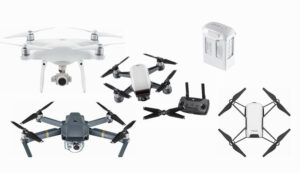 Where Does The DJI Mavic Air 2 Fit In?
Where Does The DJI Mavic Air 2 Fit In?
The answer to this question boils down to your intended use case(s)…
You Just Want A Fun And Capable Drone
If you’re simply in the market for an amazing drone with impressive capabilities but not needed on a super high-res professional level, the DJI Mavic Air 2 is a great choice.
Some may argue that 48 megapixel is high-res, and they’d be right, but some of us old-timer photographers and videographers have a hard time downgrading our image sensor size from one inch to 1/2 inch. Megapixel count isn’t everything.
Prosumer Photographer/Videographer
If you’re kind-of into photography and videography, you can’t go wrong with The DJI Mavic Air 2. It offers quite many features, besting even the top-of-the-line birds in some cases.
Professional Photographer
If you’re looking to print large images from your drone shots, the megapixel count in this bird can’t be beaten. That said, if you’re not going big but are more concerned about bitrate, color, and image sensor size; the Phantom 4 Pro V2.0 is the way I’d go (and have BTW).
Professional Videographer
You might be happy with The DJI Mavic Air 2 or even the Mavic 2 Pro/Zoom or Phantom 4 Pro V2.0, but you’ll be ecstatic with an Inspire if you’re really looking to go pro.
You Just Want Something To Play With
In that case, go with a Tello, LOL. That said, if you want a bit more capability, The DJI Mavic Air 2 is the way to go. It beats out the original Mavic Pro and costs less.
I’m already over 1800 words. Let’s get this one closed up…
Conclusion
So, there you have it. The DJI Mavic Air 2, all of its specs and features, and my thoughts on where it fits in the current family line.
If you’ve decided to pick The DJI Mavic Air 2 or one of the other drones I’ve mentioned in this article, feel free to do so by clicking on the links below. It won’t cost you any more than going to the sites directly to purchase but will give me a little kickback and help support this website. I’ll list options to get them directly from DJI as well as from Amazon so you can choose whichever you prefer:
DJI Mavic Air 2
DJI Mavic 2 Series
DJI Phantom 4 Pro V2.0
Now, I’d like to hear from you… Did I miss something you think is important to mention? Do you have one of these beautiful birds and want to share more information? Will you be getting a DJI Mavic Air 2, something else, or holding off for the next release? Let me know by commenting below.
Thank you,
Scott Hinkle
MavicManiacs.com
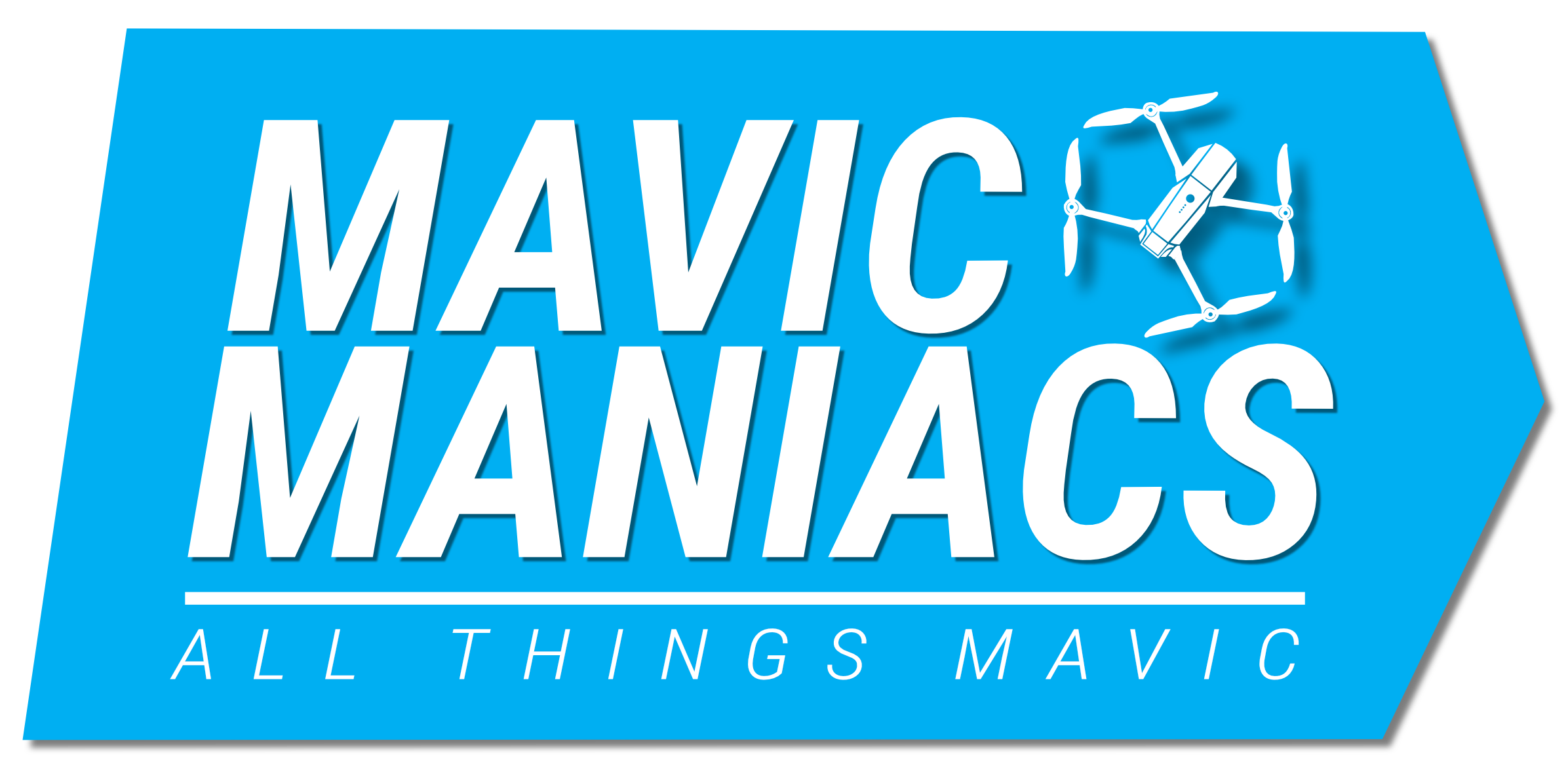





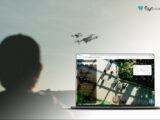

Hi Scott,
Your article is really very detailed and well researched. All the factual data and other specs make it much easier for the reader to make an informed decision. Also, you personal opinion and experience with drones puts the reader at ease with regards to buying a quality product.
I was involved with drones a while back, together with my son, and if we had detail like this, the purchase would have been much easier initially.
Hello,
Thank you. I try to provide as much detailed info as I can while keeping it under book-length, LOL. Because I have experience with multiple drone models, I like to make comparisons so people who want to know how it stacks up against options A or B can make a determination.
We all start in the same boat as you and your son. I too would have loved a comparison article before I purchased my first drone. Heck, I appreciate them now as I look to buy the next!
Thanks for commenting,
Scott
Thanks for sharing this post with us.
As time goes on, the quest for more advanced technologies has ravaged the world hence the production of drones and they are used in situations where manned flight is considered too risky or difficult. The Mavic Air 2 offers ultra-clear details, a 1/2-inch image sensor, 4K/60fps video, 48MP photo resolution, enhanced HDR, and also flies smarter and safer.
Hello,
I’m happy to share information with others.
Yes, I’ll admit that I’m one of those people that craves the latest and greatest. To that end, I help drive that force, LOL.
The Mavic Air 2 really is a step up. I’d happily replace my original Mavic Pro with it.
Thanks for commenting,
Scott